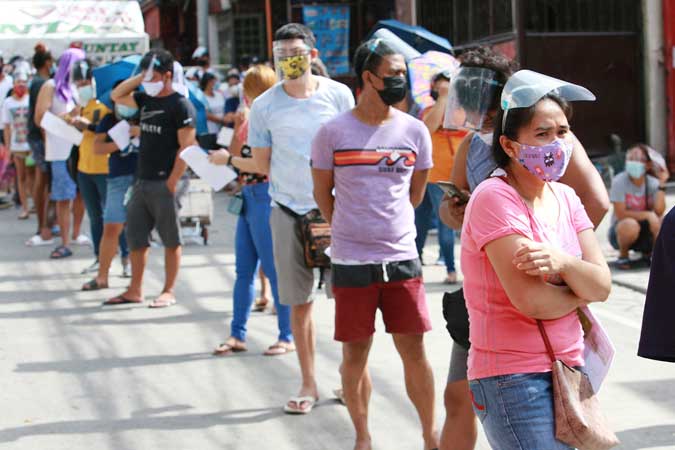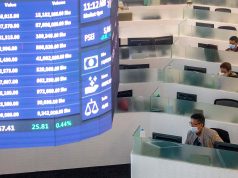PHL economy will struggle to recover — Fitch Solutions

THE PHILIPPINE ECONOMY will likely “struggle to recover” this year amid a “third wave” of coronavirus disease 2019 (COVID-19) infections, renewed lockdown restrictions in the capital region, and a snail-paced vaccination program, Fitch Solutions said.
Think tank Fitch Solutions, in a note on Wednesday, trimmed its Philippine gross domestic product (GDP) growth projection to 5.3% this year, from an earlier 5.8% forecast.
“We at Fitch Solutions believe the Philippines economy will continue to struggle amid its difficulties controlling the spread of COVID-19 and normalizing economic activity. The Philippines has been battling a rampant third wave of COVID-19 cases, which looks set to delay the economic recovery further,” the note read.
The think tank also cut its 2022 GDP growth forecast for the Philippines to 6.5%, from the previous 8.2% projection.
Fitch Solutions said the country’s overall economic output in nominal terms will remain 11.5% lower than its pre-crisis trend level by 2025.
Following the steeper-than-expected 4.2% slump in the first quarter, Fitch Solutions said the extended lockdowns in Metro Manila and its adjacent provinces will “weigh substantially” on the second-quarter GDP and further stall the economy’s recovery.
“The Philippines is highly vulnerable to lockdowns given its significant dependence on domestic activity for growth. Constraints on domestic activity are likely to be in place through the rest of 2021, but given the recent outbreak, we now expect these to be more stringent than we had previously assumed,” Fitch Solutions said.
Growth in household consumption will be slower at 4% from its previous forecast of a 4.5% expansion, it noted. Savings among Filipino families will remain elevated during the prolonged crisis and tight labor market.
High inflation and a slowdown in the manufacturing sector could further weigh on household consumption, but it may find support from a rebound in remittance inflows as the global economy recovers.
Muted household spending will be partially offset by the expected 7% growth in government spending, Fitch Solutions said. Meanwhile, weak domestic demand will drag investments as capital formation is now only seen growing by 10% this year from 14% previously.
“We continue to expect public sector support to spark a rebound in investment activity but the disruptions from lockdowns and weakened business sentiment will hamper policymakers’ efforts,” the think tank said.
Meanwhile, net exports could also be a drag this year due to higher prices of international goods and the expected rebound in imports.
The Development Budget Coordination Committee (DBCC) is set to meet on May 18 to review current growth targets and other macroeconomic assumptions, according to the Budget department.
The interagency body set a 6.5-7.5% growth target for 2021 in its previous meeting in December, and a higher goal of an 8-10% expansion in 2022.
Economic managers had said this year’s growth will likely be slower than the initial target because of the impact of the extended lockdowns.
In a related development, Asian Development Bank (ADB) Economist Shu Tian said in a webinar on Wednesday that developing Asian economies should aim for a “green” and sustainable economic recovery, as countries like the Philippines are highly vulnerable to the risks of climate change.
Ms. Tian said the Asia-Pacific region will need to invest at least $1.5 trillion each year in sustainable development goal-related investments to achieve the targets by 2030. This represents to 4-5% of the region’s GDP.
Developing economies can mobilize resources through green and social bond issuances by both the public and private sectors, she said. — B.M.Laforga



